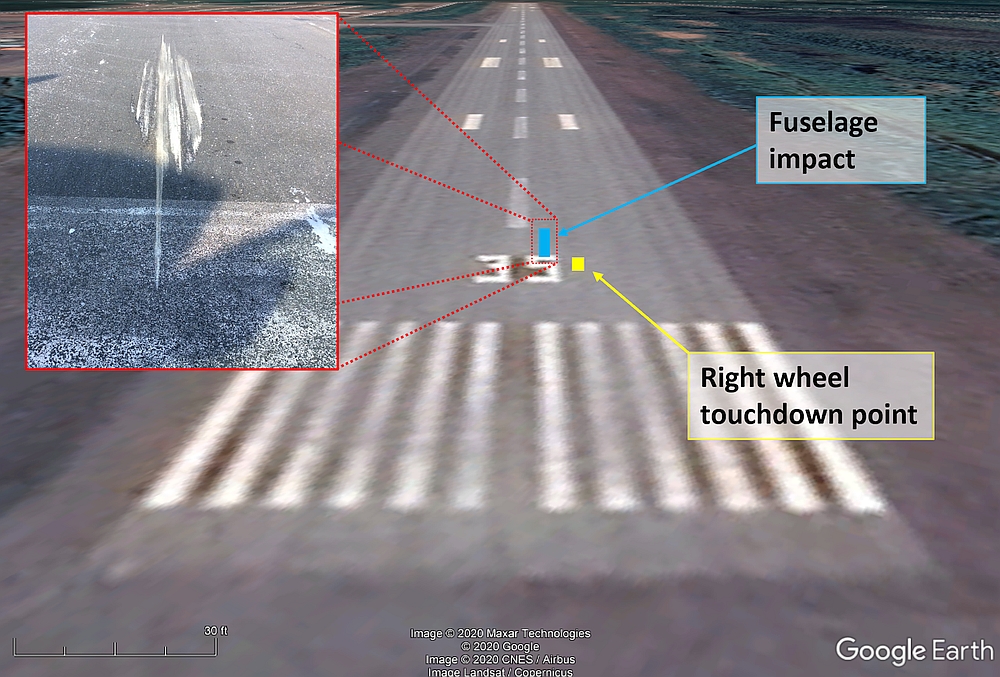Incident Background :
On 20 January 2020, the de Havilland DHC‑8‑314 aircraft (registration C‑GXAI, serial number 481), operated by Air Inuit Ltd., was conducting scheduled flight AIE820 from Québec/Jean Lesage Airport, Quebec, to Schefferville Airport, Quebec, with 3 crew members and 42 passengers on board.
During landing, as the wheels touched down on Runway 35 at 1109 Eastern Standard Time, the aft fuselage struck the runway.
After landing, the aircraft taxied to the terminal to disembark the passengers. No one was injured; however, the aircraft sustained major damage. The emergency locator transmitter did not activate.

Wheel touchdown and Fuselage impact points on Runway.
Damage to the aircraft :
The aft fuselage had friction damage, and the structure was dented. The skin, frame, structural stiffeners, and longerons in the lower part of the fuselage were damaged.
The fuselage runway contact sensor was torn from its mount .
The flight data recorder indicated that, upon landing, the vertical acceleration recorded was 2.37 times the force of gravity (g). According to the aircraft manufacturer, a level 1 hard landing inspection was required before the aircraft could be returned to service.
Injuiries to occupants :
Nil Injuiries.
Findings as to causes and contributing factors.
These are conditions, acts or safety deficiencies that were found to have caused or contributed to this occurrence.
- The pilots forgot to perform the descent checklist and realized this at an inopportune time, when the pilot monitoring was providing a position report.
- Given the ambiguities and contradictions in the stabilized approach guidelines, the captain interpreted that he was allowed to continue the approach below 500 feet above aerodrome elevation although the flaps had not been set to 35° and the final checklist had not been completed.
- Communicating with the flight attendant to confirm the cabin status and performing the descent checklist during final approach added to the pilots’ workload, which was already heavy.
- The combination of the visual conditions and the plan continuation bias prompted the pilots to continue managing the height and speed deviations past the stabilized approach gate.
- When the aircraft passed 500 feet above aerodrome elevation, the pilots, who were dealing with a heavy workload, passed the stabilized approach gate without noticing it and continued the approach, which was de facto unstable.
- At the time of the flare, the aircraft no longer had enough energy to stop the rate of descent solely by increasing the pitch attitude.
- The instinctive reaction to increase the pitch attitude, combined with the hard landing, resulted in the aft fuselage striking the runway, causing major damage to the aircraft’s structure.
.jpg)
Other findings
- Data from the cockpit voice recorder were not secured after the accident, and the accident was not reported to the TSB until the next day. Data from the cockpit voice recorder specific to the accident were nevertheless available to TSB investigators.
Report and Picture source : TSB Canada - Air transportation safety investigation report A20Q0013.





.jpg)
